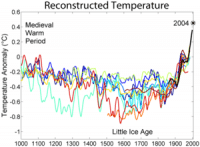“An issue as important as global warming should not descend into a shouting match between the faithful and the heretical.”
That was the subhead in the print version of Jack Mintz’s March 17 column in Canadian Business and, up to that point, he was making pretty good sense. But then Mintz took to shouting about the heretical Dr. David Suzuki, a man who continues to infuriate certain segments of Canadian society and, especially, Canadian media by honouring science over the theology of unlimited Alberta oil exploitation.
Jack Mintz is the Palmer Chair of Public Policy at the University of Calgary, an institution that is used to being embarrassed by some of its academic freedom riders. Mintz launched his tirade in reasonable-sounding tones, quietly bemoaning a Suzuki quote that we have already addressed in this earlier post .
Then Mintz says this, “Not being an expert in modelling climate change, I cannot pass judgment on the quality of the research involved.” Again, so far so good. But in the very next sentence, Mintz leaps directly into ill-informed judgment, saying “But it is clear there is some room for scientific disagreement ….”
Clear to whom?
After a long aside about the imperfections of Keynesian economic theory, Mintz comes back to the climate change question by dragging up the old hockey stick. Loyal DeSmog readers will know all about Dr. Michael Mann’s 1999 climate reconstruction graph – a graph that, Mintz says, “inspired a profound belief that temperature trend lines were shaped like a hockey stick – flat for a long time, then a sharp increase in recent years due to carbon emissions.” In a counterpunch widely celebrated in denier circles, two Canadians – an economist and a mining promoter – argued, in Mintz’s words, that “Mann’s data and statistical methodology were flawed, disproving one of the most important arguments at the time in favour of carbon-induced global warming.” (My emphasis.)
This is either intentionally untrue or flagrantly ill-informed. The narrow debate about Michael Mann’s statistical method did nothing to discredit the climate reconstructions on which he based his work. Neither has anyone done anything to question the validity of all the other climate reconstruction results illustrated at left (and explained here). For that matter, if you follow the black line (the actual temperature since reliable record-keeping began), you begin to see a curve that looks more like a rocket trip than a hockey stick.
Mintz concludes his logical meanderings by once again trying to sound reasonable. “… it should be left to the scientists to sort out what ideas hold up through empirical verification,” he says. “This is the essence of good science, and we should make sure we don’t undermine its important process.”
Seeing how clumsily an ill-informed economist like Mintz blunders around this issue, we could hardly disagree.
Subscribe to our newsletter
Stay up to date with DeSmog news and alerts






